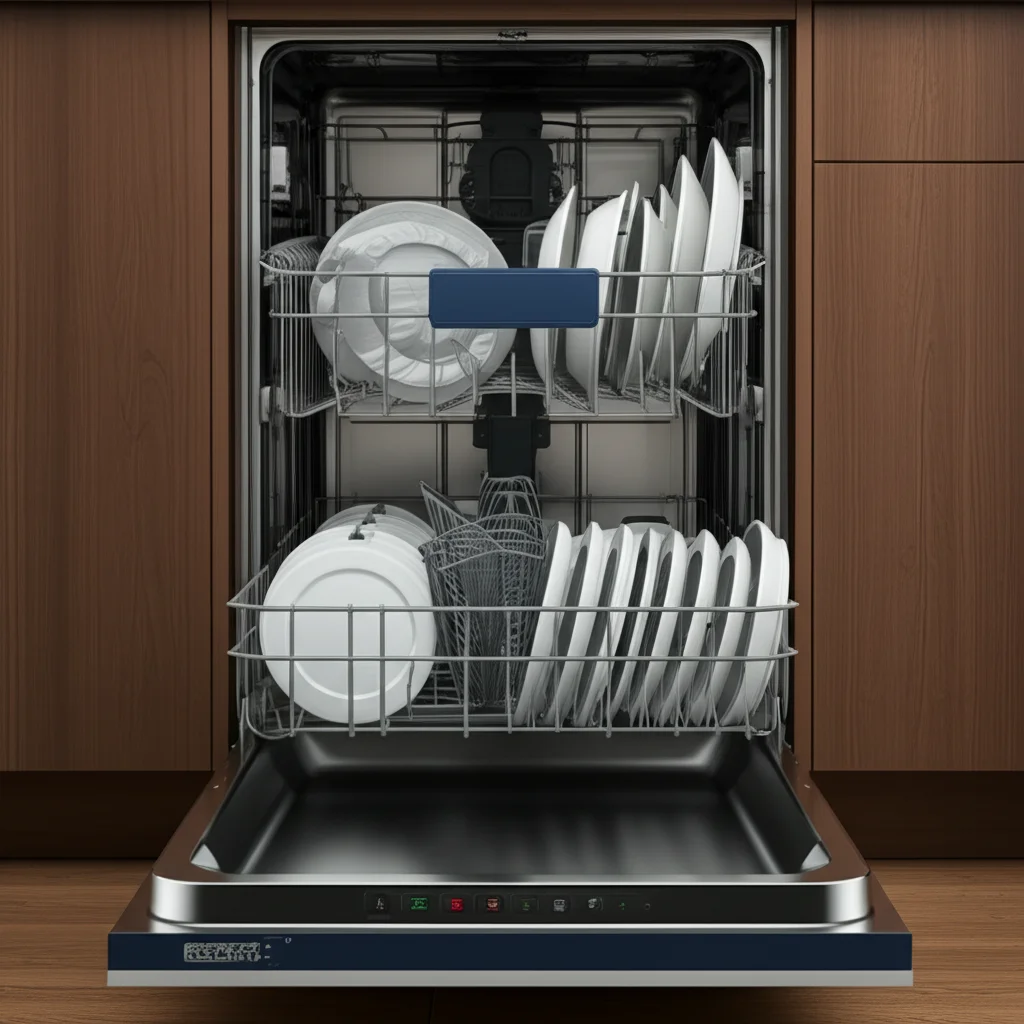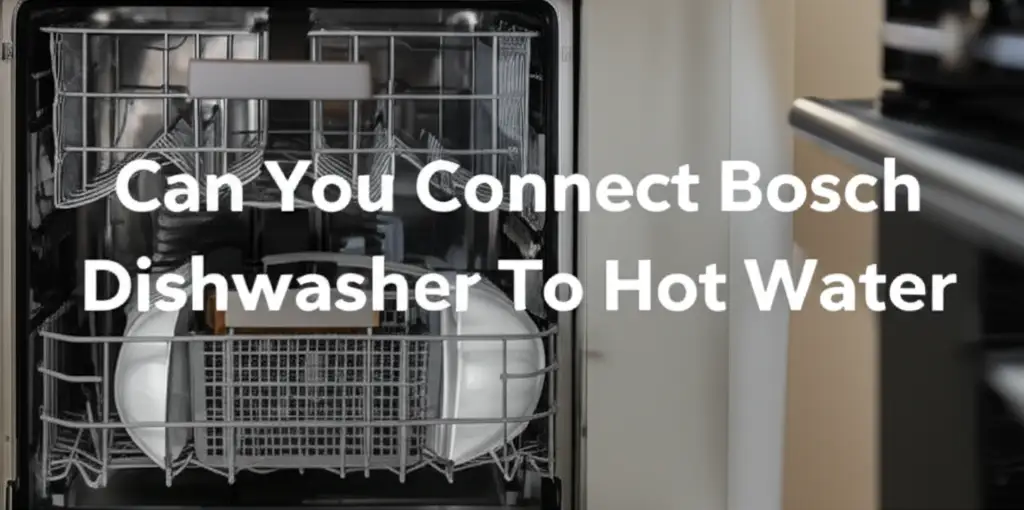· Todd Martin · Home Appliances · 18 min read
Which Dishwasher Setting Uses Least Electricity

Maximize Savings: Which Dishwasher Setting Uses Least Electricity?
Are you tired of seeing high numbers on your electricity bill? Your dishwasher might be a silent contributor to those costs. Many people wonder which dishwasher setting uses least electricity. Knowing this information can significantly cut down on your household expenses.
Understanding your dishwasher’s various cycles and features helps you make smarter choices. This article explains how different settings impact energy use. We also provide practical tips to improve your dishwasher’s efficiency. Get ready to save money and help the environment, all from your kitchen.
Takeaway
To use the least electricity with your dishwasher, remember these key points:
- Choose the “Eco” or “Light” cycle. These settings use less hot water and shorter wash times.
- Skip the heated dry option. Air drying saves a lot of energy.
- Always run full loads. Partial loads waste water and electricity.
- Perform regular maintenance. A clean dishwasher runs more efficiently.
Concise Answer
The “Eco” or “Light” wash cycles generally use the least electricity. These settings operate at lower water temperatures and often skip the heated drying phase, significantly reducing power consumption. Choosing air dry and running full loads also maximizes efficiency.
Understanding Dishwasher Energy Consumption
My dishwasher needs power to clean dishes. It uses energy for several main tasks. First, it heats the water. This step uses the most electricity. Hot water helps remove food particles and grease.
Second, the motor runs to spray water and circulate it. This part also needs electricity. The motor moves the water through spray arms. It ensures all dishes get clean. Third, many dishwashers use a heating element for drying. This element adds significant energy costs. Understanding these energy demands helps you choose the right settings.
What Makes a Dishwasher Use Energy?
Dishwashers consume power in several distinct ways. Heating water for the wash and rinse cycles is the primary energy drain. The hotter the water, the more electricity the machine needs. Some cycles use very hot water to sanitize dishes. This high heat requires much energy.
The circulation pump and drain pump also use electricity. These pumps move water during the wash and drain cycles. While less impactful than water heating, their consistent operation adds to overall consumption. Finally, the drying process plays a large role. Most dishwashers offer a heated dry option. This option uses a powerful heating element to dry dishes quickly. Skipping this feature can save a lot of energy. For more information on choosing an efficient appliance, consider what to look for in a dishwasher.
Factors Influencing Energy Use
Several factors control how much electricity your dishwasher uses. The chosen cycle is a big one. Cycles with higher temperatures or longer wash times use more energy. For example, a “Heavy Duty” cycle demands more power than a “Light” cycle. The drying method also matters greatly. A heated dry setting consumes significantly more electricity than air drying.
My dishwasher’s efficiency also depends on how I load it. Overloading blocks water jets. This means the dishwasher must work harder and longer. Underloading wastes water and energy for only a few items. The age and model of your dishwasher also affect its energy performance. Older models generally use more water and electricity. Newer, Energy Star-rated models are designed for efficiency. Knowing how long does a dishwasher take to finish can give you insight into its potential energy use per cycle.
The Eco Cycle: Your Best Bet for Saving Electricity
If you want to save electricity, the “Eco” cycle is your friend. Most modern dishwashers have this setting. It is specifically designed to minimize energy use. This cycle achieves cleanliness with less power. I use it often to lower my utility bills.
The Eco cycle works by using lower water temperatures. It might also extend the wash time slightly. This longer duration at lower heat still cleans dishes effectively. It avoids the energy spike of very hot water. Additionally, the Eco cycle often defaults to air drying. This means no extra heating for drying.
How the Eco Cycle Saves Energy
The “Eco” cycle, sometimes called “Economy” or “Energy Saver,” is a smart choice for electricity conservation. It prioritizes lower energy consumption. This cycle achieves this by reducing the water heating phase. Water is warmed to a gentler temperature. This saves a lot of electricity. High heat for sanitization is skipped.
The wash time might be a bit longer. However, the extended wash time at lower temperatures uses less energy overall. This is because heating water requires much more power than running the motor longer. My dishwasher’s Eco cycle still cleans well for everyday dishes. It handles dishes that are not heavily soiled. Properly preparing dishes for the dishwasher by scraping food can further enhance the effectiveness of eco cycles, reducing the need for more intense washes. Learn more about how to prepare dishes for dishwasher.
When to Use the Eco Cycle
I find the Eco cycle perfect for most daily loads. It works well for dishes with light to medium soil. Breakfast plates, regular dinnerware, and lightly soiled glasses are good candidates. You do not need extreme heat for these items. Using the Eco cycle for these everyday washes helps me save money constantly.
Avoid using the Eco cycle for very greasy pots or baked-on food. These items need higher temperatures and stronger jets. The Eco cycle might not clean them completely. In those cases, a stronger cycle may be necessary. For optimal results with the Eco cycle, I always scrape food off plates first. This helps the cycle clean effectively.
Light Wash vs. Normal vs. Heavy Duty: Cycle Comparison
Dishwashers offer several wash cycles beyond just “Eco.” Understanding how “Light Wash,” “Normal,” and “Heavy Duty” cycles differ in energy consumption is important. Each cycle serves a specific purpose. They also use varying amounts of electricity. My choice depends on how dirty my dishes are.
A “Light Wash” cycle is similar to “Eco” in its energy-saving potential. It uses less water and lower temperatures. The “Normal” cycle is a standard choice for mixed loads. It balances cleaning power with energy use. The “Heavy Duty” cycle is the most power-hungry. It uses high temperatures and extended wash times.
The Energy Cost of Different Wash Cycles
Different wash cycles have very different energy footprints. The “Light Wash” cycle typically uses the least energy among the standard options. It is designed for delicate items or lightly soiled dishes. It uses less water and operates at lower temperatures. This makes it efficient for quick clean-ups.
The “Normal” cycle is a middle ground. It uses more energy than a “Light Wash.” It provides a balanced approach for daily mixed loads. This cycle usually includes hotter water and a longer wash time than “Light Wash.” It still aims for a good balance between cleaning and energy. Keeping your dishwasher’s filter clean helps ensure all cycles, even lighter ones, perform optimally and don’t need to run longer. Understanding how to clean filter in dishwasher can contribute to overall efficiency.
When to Choose Each Cycle
I select my dishwasher cycle based on the load’s soil level. For lightly soiled dishes or glassware, I choose the “Light Wash.” This cycle is perfect for items that just need a quick rinse and shine. It saves electricity and water. This is also a good option when you are in a hurry and have minimal dirt.
For typical daily dishes, like dinner plates and cutlery, I use the “Normal” cycle. This cycle effectively removes most food residues without excessive energy use. It is a good everyday default. For heavily soiled pots, pans, or dishes with baked-on food, I use “Heavy Duty.” This cycle uses the most energy due to higher temperatures and longer durations. It gets the job done when other cycles cannot.
The Impact of Drying Options on Energy Use
After a wash cycle, dishes need to dry. How your dishwasher dries dishes makes a huge difference in energy use. Many dishwashers offer a heated dry option. This feature uses a lot of electricity. I always try to avoid it if I can.
Heated drying involves a powerful heating element. This element warms the air inside the dishwasher. It evaporates water from the dishes quickly. While convenient, it uses more energy than any other part of the cycle. Fortunately, there are more energy-efficient alternatives.
Heated Dry vs. Air Dry
The heated dry cycle is the biggest electricity user in a dishwasher. It activates an electric heating element. This element heats the air to a high temperature. This process dries dishes quickly and completely. However, it significantly increases the overall energy consumption of the wash cycle. If your KitchenAid dishwasher is not drying effectively, it might be due to issues with the heating element or rinse aid dispenser, which can impact energy usage. You can troubleshoot by checking why is my kitchenaid dishwasher not drying.
Air dry, also known as natural drying or condensation drying, uses no extra electricity. It relies on the residual heat from the wash cycle to evaporate water. Then, cool air circulates to dry the dishes. For this to work best, I open the dishwasher door a crack after the cycle finishes. This allows moisture to escape. It helps dishes dry naturally. This simple step saves a lot of energy.
Maximizing Air Dry Efficiency
To get the best results from air drying, consider these tips. First, use a rinse aid. Rinse aid helps water sheet off dishes. This prevents water spots and speeds up drying. Without it, dishes can stay wet longer. Second, open the dishwasher door after the cycle. I wait for the wash cycle to finish, then unlatch the door. This releases steam and humidity. Air then circulates inside.
Third, unload the bottom rack first. This prevents any water collected on cups or bowls from dripping onto already dry items below. You can also place a towel on the countertop nearby. This towel absorbs moisture as you unload. These small habits ensure dishes dry well without using extra electricity.
Beyond Settings: Other Ways to Reduce Dishwasher Electricity
Choosing the right dishwasher setting is important. However, other habits also impact your electricity use. I have learned several ways to make my dishwasher even more energy-efficient. These tips go beyond just selecting a cycle. They involve how I load dishes and maintain my machine.
Small changes in routine can lead to big savings. For example, pre-rinsing can affect which cycle you need. Running full loads is another crucial step. Even the temperature of your tap water plays a role. These strategies help reduce overall energy consumption.
Optimize Your Loads
Loading your dishwasher correctly saves energy. Always wait until you have a full load before running the machine. Running a half-empty dishwasher wastes water and electricity. My machine uses the same amount of power for a few dishes as it does for a full rack. Fill it to capacity without overcrowding. Overcrowding blocks water and detergent from reaching all surfaces. This means dishes might not get clean. Then, you would need to rewash them, using more energy.
Pre-scraping dishes also helps save energy. I scrape off large food particles before loading. This removes debris. It prevents my dishwasher from working harder. It also stops food bits from clogging the filter. Heavy pre-rinsing, however, is often not necessary for modern dishwashers. Most new models can handle typical food residues. Excessive pre-rinsing wastes water. For deeper insights, learn more about how to deep clean a dishwasher.
Water Temperature and Timing
The temperature of your home’s hot water supply impacts dishwasher energy use. Your dishwasher heats water further if needed. If your water heater is set very high, your dishwasher might use less power to reach its target temperature. However, this also means higher energy use from your water heater itself. A balance is best. I set my water heater to around 120°F (49°C). This is hot enough for effective cleaning. It avoids excessive energy waste.
Timing your dishwasher runs can also save money. Many utility companies offer off-peak electricity rates. These rates are lower during certain hours, often late at night or early morning. I use my dishwasher during these times if possible. This lowers the cost per kilowatt-hour. This simple change can reduce my overall electricity bill.
Regular Maintenance for Efficiency
A well-maintained dishwasher runs more efficiently. Over time, food particles and grease can build up inside. This buildup clogs filters and spray arms. When these parts are clogged, the dishwasher works harder. It uses more energy to clean dishes. I make sure to clean my dishwasher regularly. This helps it perform its best.
My cleaning routine includes checking the filter. I remove and rinse it after every few cycles. This prevents food from circulating and re-depositing on dishes. Occasionally, I deep clean the interior with vinegar or baking soda. This removes mineral deposits and odors. Keeping the drain area clear is also important. A clear drain ensures proper water flow. For more detailed instructions, consider reading about how to clean dishwasher filter and how to clean dishwasher with vinegar. Ensuring your dishwasher drain is clean also prevents blockages that can force the motor to work harder. Learn about how to clean dishwasher drain.
The Role of Dishwasher Age and Features in Energy Efficiency
Not all dishwashers are created equal when it comes to energy use. The age of your appliance plays a big role. Older models often consume much more electricity than newer ones. Technology has made great strides in efficiency. Modern features also help reduce power consumption. I consider these factors when looking at my energy bills.
Upgrading to a new, energy-efficient model can be a significant investment. However, the long-term savings on utility bills can offset the cost. Understanding what makes a dishwasher energy-efficient helps you make informed decisions. Look for specific certifications and innovative technologies.
Energy Star Certification
When buying a new dishwasher, I always look for the Energy Star label. This label means the appliance meets strict energy efficiency guidelines set by the EPA. Energy Star certified dishwashers use less water and energy than standard models. They achieve excellent cleaning performance with fewer resources. This certification covers various factors. It considers water heating, motor efficiency, and drying methods.
Energy Star models often incorporate advanced features. These features help them save energy. They might have soil sensors that detect how dirty dishes are. This allows the dishwasher to adjust water usage and cycle time. They might also use advanced filtration systems. These systems prevent food particles from recirculating. This leads to cleaner dishes with less water and energy. If you’re wondering what to look for in a dishwasher, energy efficiency is a key factor.
Smart Features and Sensor Wash
Modern dishwashers offer smart features that enhance energy efficiency. Sensor wash technology is a prime example. These sensors detect the soil level on dishes. My dishwasher can then choose the most appropriate cycle duration and water temperature. This means it avoids using more energy than necessary. For example, if dishes are lightly soiled, the sensor will shorten the cycle. This saves both water and electricity.
Delay start is another useful feature. It allows me to program the dishwasher to run during off-peak electricity hours. This helps me take advantage of lower utility rates. Some smart dishwashers also connect to home energy management systems. They can optimize their operation based on real-time electricity prices. These intelligent features help reduce overall energy consumption without sacrificing cleanliness.
Dishwasher Maintenance for Optimal Energy Performance
Proper maintenance is not just about keeping your dishwasher clean. It also directly impacts its energy efficiency. A well-maintained machine runs smoother and uses less power. Neglecting regular cleaning can cause your dishwasher to work harder. This increases its electricity consumption. I make sure to perform regular checks and cleanings.
Regular maintenance prevents common issues. These issues include clogged filters or spray arms. These problems make the dishwasher less efficient. They can also lead to more expensive repairs later on. A little effort now saves both energy and money in the long run.
Cleaning the Dishwasher Filter
The dishwasher filter is a critical component for efficiency. It traps food particles. This prevents them from recirculating onto your dishes. A clogged filter makes the dishwasher work much harder. It has to push water through blockages. This uses more electricity and can result in poorly cleaned dishes. I clean my dishwasher filter regularly. For most users, this means cleaning it once a week or every few cycles.
Removing the filter is usually simple. Many models have a cylindrical filter at the bottom. I twist it out, rinse it under running water, and use a brush to remove stubborn debris. This simple task significantly improves cleaning performance and energy efficiency. It helps my dishwasher run as intended. Knowing how often should you clean your dishwasher filter is essential for energy savings. If you need more specific instructions on how to clean a specific filter, like a GE dishwasher filter, you can find resources like how to clean filter in old ge dishwasher.
Spray Arm and Drain Care
My dishwasher’s spray arms deliver water to the dishes. If the tiny holes on the spray arms get clogged, water distribution becomes uneven. This forces the dishwasher to run longer cycles to get dishes clean. I regularly check the spray arms for blockages. Food bits or mineral deposits can easily clog them. I use a toothpick or small wire to clear any debris. This ensures water sprays evenly.
The dishwasher drain also needs attention. A partially clogged drain makes the pump work harder. This wastes electricity. It can also lead to standing water inside the tub. I ensure the drain area is free of large food particles. Sometimes, a deeper clean is needed to clear sludge or mineral buildup. Cleaning the drain helps the machine complete its cycle efficiently. This keeps my utility bills lower. For persistent drain issues, you might need to consult resources on how to clean dishwasher drain.
Addressing Hard Water Issues
Hard water contains high levels of minerals. These minerals, like calcium and magnesium, can build up inside my dishwasher. This buildup, called limescale, coats heating elements and internal components. Limescale makes the dishwasher less efficient at heating water. It also affects cleaning performance. Removing limescale is important for energy savings.
I use a dishwasher cleaner designed for hard water. Alternatively, running an empty cycle with vinegar can help. Vinegar is acidic and dissolves mineral deposits. I pour two cups of white vinegar into a dishwasher-safe bowl. I place it on the top rack. Then, I run a hot wash cycle without detergent. This helps descale the interior. It keeps the heating element working efficiently. For comprehensive cleaning that addresses hard water, consider options like how to clean calcium buildup in dishwasher or even how to clean dishwasher with vinegar and baking soda for a more thorough clean.
FAQ Section
Q1: Does pre-rinsing dishes save electricity?
Pre-rinsing dishes typically does not save electricity. Modern dishwashers are designed to handle food particles without extensive pre-rinsing. Most models have sensors that detect soil levels. Over-rinsing wastes water before the wash cycle even begins. It also uses energy for the water heater. Scraping large food scraps into the trash is usually enough.
Q2: Is it better to wash dishes by hand or use a dishwasher for energy savings?
For energy and water savings, using an efficient dishwasher is generally better than hand washing. Modern Energy Star dishwashers use significantly less water than washing dishes by hand, especially if you let the water run. They also heat water more efficiently. Always run a full load in the dishwasher for best results.
Q3: How much electricity does a dishwasher use per cycle?
The electricity a dishwasher uses per cycle varies greatly. It depends on the model, chosen cycle, and drying option. An older dishwasher with a heated dry cycle might use 1.5-2.5 kWh per load. A newer Energy Star model using an Eco cycle with air dry could use as little as 0.5-1 kWh per load.
Q4: What is the “Sanitize” cycle and how much energy does it use?
The “Sanitize” cycle uses extra-hot water to kill bacteria. This cycle heats water to very high temperatures, typically above 150°F (65°C). It holds this temperature for a longer period. This process consumes significantly more electricity than standard wash cycles. It is useful for baby bottles or items needing sterilization, but not for daily use.
Q5: Can I open my dishwasher mid-cycle to air dry?
You should not open your dishwasher mid-cycle to air dry. Opening the door mid-cycle can interrupt the wash or rinse phases. This might cause the dishwasher to reset or drain prematurely. It also releases steam and potentially hot water, which can be a burn hazard. Wait until the wash cycle fully completes. Then, open the door to air dry.
Q6: Do newer dishwashers use less electricity?
Yes, newer dishwashers generally use much less electricity than older models. This is due to advancements in technology and stricter energy efficiency standards. Newer models often have better insulation, more efficient motors, and smart sensors. They also use less water. Always look for the Energy Star label when buying a new appliance.
Start Saving Electricity Today
You now understand which dishwasher setting uses least electricity. The “Eco” or “Light” cycles are your top choices for energy efficiency. They minimize hot water use and often rely on natural air drying. Remember, skipping the heated dry option is one of the most impactful ways to reduce your dishwasher’s electricity consumption.
Beyond settings, your habits matter too. Always run full loads, scrape excess food, and maintain your dishwasher regularly. These simple steps ensure your appliance operates at peak efficiency. You will not only save money on utility bills but also contribute to a greener home. Start implementing these tips today. Enjoy cleaner dishes and a lighter electricity bill!





